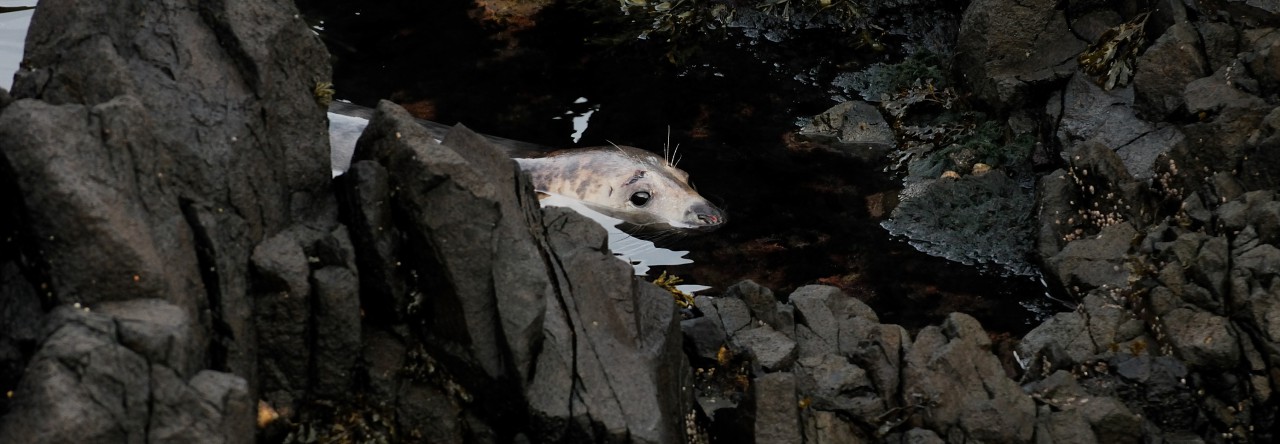
It’s been another busy week here in chemistry labs at the University of Liege. I’ve completed extracting all the PHATS team’s blubber samples for persistent organic pollutant (POP) analysis, and now am moving on to the purification part of the sample preparation process. I’ve only got two weeks left to get all the sample preparation completed, so hopefully all the lab work will go according to plan! The purification process isn’t too complicated but it does have lots of time consuming steps, from multiple standard spikes, to acid clean-up on columns, to concentrating the samples down via nitrogen evaporation. So it’s just a case of getting your head down and getting on with it all, as the sooner it’s done the sooner we’ll have some interesting results to look through.

The results of POP studies are frequently worrying as well as interesting. A good example of this happened last week, when the Scottish Marine Animal Stranding Scheme (SMASS) got some lab results back showing the PCB concentrations in one of the stranded whales they had examined last year, ‘Lulu’, one of Scotland’s few resident orca. She sadly had one of the highest ever recorded concentrations of PCBs in her body, and there are concerns that the other members of her pod will have similarly high levels. Another interesting (and sad) aspect of Lulu’s case is that she had never produced a calf, despite the fact she was about 20 years old and orca usually have their first calves at around 14 years of age. It is well known that POPs negatively impact on individual health, including fertility, therefore it is possible Lulu failed to reproduce due to her high pollutant burden. Even more concerning however, is what might have happened to Lulu’s high PCB concentrations if she had produced a calf.

Female marine mammals pass approximately 60% of certain types of the pollutants they have accumulated in their blubber to their first calf, some passing through the placenta but the majority transferring via the fat rich milk marine mammals produce. Therefore, if Lulu had produced a calf, it also could have had one of the highest PCB burdens ever recorded in a marine mammal. Male marine mammals typically have much higher POP concentrations than adult females due to this phenomenon, although even male orca in populations considered to be ‘highly contaminated’ (251.2mg/kg) have far lower concentrations than Lulu did (957mg/kg). This sex pattern in pollutant concentrations is present throughout all marine mammals, and after first reproduction an adult female’s POP concentration will gradually decrease with each infant she produces. This means that infant marine mammals are typically exposed to dangerously high concentrations of POPs as soon as they are born. Interestingly, in the two marine mammal species that appear to show menopause (orca and short-finned pilot whale), upon reproductive senescence a female’s POP concentrations begin to increase once again.

Another major cause of patterns in POP concentrations in marine mammals is their position in the food chain (their trophic level) and the region they obtain their food from. Orca represent a fascinating opportunity to study these patterns as through-out the species, there are different populations that specialise in eating either fish or other marine mammals, or in other words different orca populations can occupy different tropic levels of a food chain. Groups that eat marine mammals, such as seals, sea lions and porpoises, typically have over double the concentrations of POPs in them than fish eating groups. This happens because the pollutants have become concentrated up the food chain due to bioaccumulation, where a predator eating lots of smaller prey gets all the pollutants in each individual it eats. A whale eating lots of seals to survive will accumulate all the pollutants all the seals were exposed to, and all the pollutants all the fish those seals ate too. Meanwhile a fish eating individual will ‘only’ accumulate the pollutants from the fish it eats. Additionally, individuals that hunt in highly industrialised areas have higher concentrations than those in ‘pristine’ areas, because the more POPs that are in a local area, the higher the concentrations in all the organisms from the bottom of the food chain to the top.
Studying patterns of POP concentrations in different types of individuals can therefore lead to a better understanding of how these persistent pollutants ‘move’ through organisms and can be transferred into later generations. It is not hard to see why POPs continue to be a problem for animal and human health, despite being banned decades ago.
